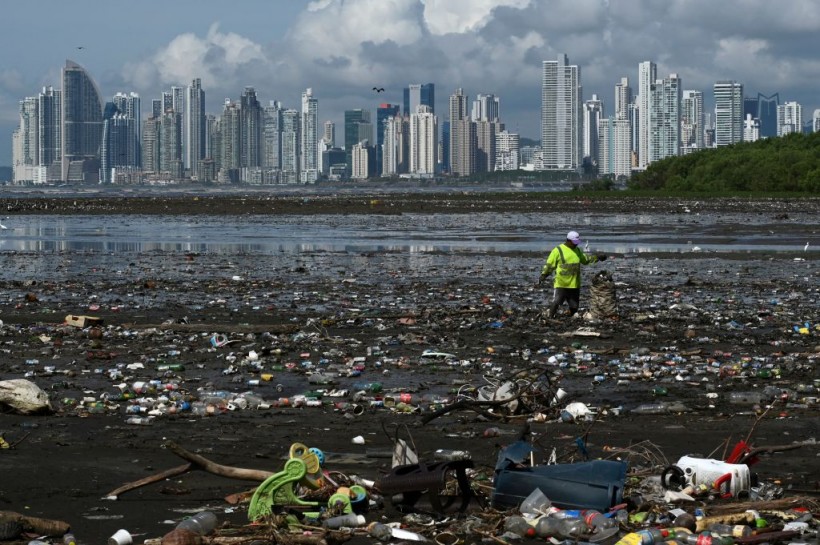Plastic pollution in oceans is a growing issue, prompting a Wageningen University and EPFL research team to enhance satellite-based detection of floating litter.
They have developed an improved artificial intelligence (AI) model that identifies plastics accurately, even in partially obscured satellite images. As society's plastic use rises, inadequately disposed waste accumulates in water bodies, ultimately reaching oceans.

A man collects garbage, including plastic waste, at the beach of Costa del Este, in Panama City, on April 19, 2021.
AI Detector Revolutionizes Marine Debris Detection
A recent study, titled "Large-scale detection of marine debris in coastal areas with Sentinel-2" published in iScience, introduces an AI detector estimating the probability of marine debris in satellite images, aiding targeted cleanup efforts with ships.
Sentinel-2 satellite images, updated every 2-5 days globally, reveal accumulations of marine debris in coastal areas, posing a challenge due to the substantial data volume. Automatic analysis using AI models, particularly deep neural networks, becomes essential for processing terabytes of data.
Assistant Professor Marc Rußwurm from Wageningen University highlights the model's learning process, drawing from examples provided by oceanographers and remote sensing specialists who visually identified marine debris instances worldwide, training the model effectively.
Addressing the need for enhanced detection, the researchers introduce an AI-based marine debris detector estimating the probability of debris for each pixel in Sentinel-2 images. This detector adheres to data-centric AI principles, optimizing limited training data utilization.
A notable innovation involves a computer vision algorithm aligning manual annotations from experts precisely with visible debris, enabling the contribution of more training data examples with reduced precision.
The innovative combination of a novel training method and a refinement algorithm enhances the predictive abilities of the deep artificial intelligence detection model, surpassing previous approaches.
Rußwurm emphasizes the detector's consistent accuracy, even in challenging conditions such as cloud cover and atmospheric haze, where conventional models often falter in accurately identifying marine debris.
Continuous Monitoring and Drift Estimation With Nanosatellites
Accurate detection of plastics within marine debris is vital, particularly in adverse weather conditions following rain or floods, when plastic waste often enters open waters. For example, a notable increase in litter flow into open waters during the 2019 Durban Easter floods in South Africa, highlighting the critical need for precise detection methods.
Conventional color channels in satellite imagery face challenges in distinguishing these objects amidst clouds, but utilizing alternative spectral channels, such as near-infrared light, significantly enhances visibility.
The advanced detection model not only enhances predictions of marine debris but also effectively identifies debris in daily-accessible PlanetScope images captured by cubic nanosatellites. This capability allows for continuous daily monitoring when paired with Sentinel-2 data.
Combining weekly Sentinel-2 and daily PlanetScope acquisitions aids in closing the gap for continuous daily monitoring, providing a comprehensive view of marine debris dynamics. Additionally, simultaneous imaging of the same marine debris patch by PlanetScope and Sentinel-2, minutes apart, offers a double view that reveals drift direction influenced by wind and ocean currents.
This information enhances drift estimation models for marine debris, contributing to a more comprehensive understanding of debris movement on water. Ongoing research at Wageningen University by Professor Rußwurm, alongside Professor Tim van Emmerik and partners like the Ocean Cleanup, aims to explore these directions further.
RELATED ARTICLE: Plastic-Degrading Fungi and Bacteria Found in China That May Help Tackle Global Waste
Check out more news and information on Plastic Pollution in Science Times.














